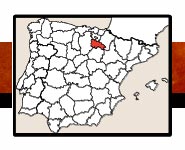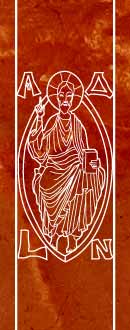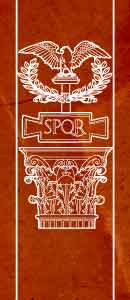


 |
 |
||
 |
|||
 |
/comple-rioj/RIOJ-RBCala-40.jpg) |
-55/BOOK-cort-40.jpg) |
 |
 |
||
/comple-rioj/TT-RIOJ-RBCala-W-50.jpg) |
|||
 |
CATEDRAL DE CALAHORRA La catedral de Calahorra es un edificio en el que se unen diversos estilos su portada principal es barroca, mientras la portada de San Jerónimo es de estilo gótico y renacentista, el claustro también es gótico y renacentista; mientras las sacristías son de estilo barroco (s. XVI-XVII) y de estilo rococó (s. XVIII). VISITA : Horario de lunes a viernes de (10:00-13:00 y 17:00-20:30). catedraldecalahorra@gmail.com |
/250-RIO-Cal-Cat-40.jpg) |
CATHEDRAL OF CALAHORRA The cathedral of Calahorra is a building in which different styles come together, its main door is Baroque, whil the doorway of San Jerónimo is of Gothic and Renaissance styles, the cloister is also Gothic and Renaissance; while the sacristies are Baroque (16 th -17 th centuries) and Rococo style (18 th century). VISIT : Timetable from Monday to Friday from (10:00-1:00 and 5:00-8:30). catedraldecalahorra@gmail.com |
ACCESO : Calahorra se ubica entre Logroño y Zaragoza (AP-68 y N-232); desde Pamplona (A-12) y desde Soria (N-111), por Logroño se puede acceder fácilmente. Los monumentos se ubican en el centro histórico (ver mapa). ACCESO PARA MINUSVÁLIDOS : Para el usuario de silla de ruedas hay que considerar: Acceso factible a algunos monumentos (arco romano, catedral, monasterio de San José, Palacio Episcopal, San Andrés y Santiago), otros están cerrados (Casa Deanes). |
/350-PLN-Calaho-50.jpg) |
ACCESS : Calahorra is located between Logroño and Zaragoza (AP-68 and N-232), from Pamplona (A-12) and from Soria (N-111), by Logroño can be easily accessed. The monuments are located in the historic center (see map). ACCESS FOR THE HANDICAPPED : For the wheelchair user it is necessary to consider. Feasible access to some monuments (Roman arch, cathedral, San José monastery, Episcopal Palace, San Andrés and Santiago), others are closed (Casa Deanes). |
|||||
 |
|||||||